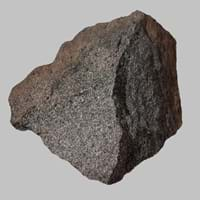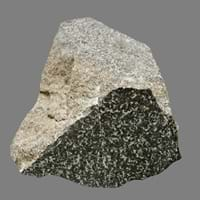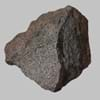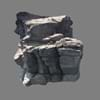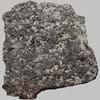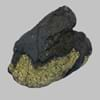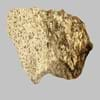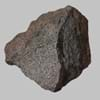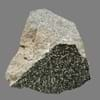Definition
Boninite is a mafic extrusive rock which is high in magnesium and silica content, formed in fore-arc environments, typically during the early stages of subduction
Diabase is a fine-grained igneous rock which is composed mostly of pyroxene and feldspar
Discoverer
Unknown
Christian Leopold von Buch
Etymology
From its occurrence in the Izu-Bonin arc south of Japan
From Greek di + base
Class
Igneous Rocks
Igneous Rocks
Sub-Class
Durable Rock, Hard Rock
Durable Rock, Hard Rock
Other Categories
Fine Grained Rock, Opaque Rock
Fine Grained Rock, Medium Grained Rock, Opaque Rock
Texture
Aphanitic to Porphyritic
Aphanitic, Granular
Color
Bluish - Grey, Brown, Green, Grey
Dark Grey to Black
Durability
Durable
Durable
Scratch Resistant
Yes
Yes
Appearance
Dull and Soft
Vesicular
Interior Uses
Decorative Aggregates, Homes, Kitchens
Countertops, Decorative Aggregates, Homes, Interior Decoration, Kitchens
Exterior Uses
Garden Decoration, Office Buildings
As Building Stone, As Facing Stone, Paving Stone, Garden Decoration, Office Buildings
Other Architectural Uses
Not Available
Curbing
Construction Industry
As a Flux in the Production of Steel and Pig Iron, As a Sintering Agent in Steel Industry to process Iron Ore, As Dimension Stone, Cement Manufacture, for Road Aggregate, Making natural cement, Manufacture of Magnesium and Dolomite Refractories
As Dimension Stone, Building houses or walls, Cement Manufacture, Construction Aggregate, for Road Aggregate
Medical Industry
Not Available
Not Available
Antiquity Uses
Artifacts
Artifacts, Monuments, Sculpture, Small Figurines
Commercial Uses
An Oil and Gas Reservoir, Cemetery Markers, Creating Artwork, Soil Conditioner, Source of Magnesia (MgO)
An Oil and Gas Reservoir, Cemetery Markers, Commemorative Tablets, Laboratory bench tops, Jewelry, Sea Defence, Tombstones
Types
Not Available
Not Available
Features
Available in Lots of Colors and Patterns, High Mg content, Is one of the oldest rock
Smooth to touch
Archaeological Significance
Monuments
Not Yet Used
Used
Famous Monuments
Not Applicable
Stonehenge in English county of Wiltshire
Sculpture
Not Yet Used
Used
Famous Sculptures
Not Applicable
Not Available
Pictographs
Not Used
Not Used
Petroglyphs
Not Used
Not Used
Figurines
Not Yet Used
Used
Formation
Boninite is a type of Igneous rock which is formed through the cooling and solidification of lava or existing rocks.
Diabase forms when molten igneous rock is squeezed up into a vertical crack in other rocks, the crack is usually forced apart and the molten rock cools in the space to form a tabular igneous intrusion cutting across the surrounding rocks and is known as a dike.
Mineral Content
Amphibole, Apatite, Biotite, Feldspar, Garnet, Hornblade, Ilmenite
Augite, Chlorite, Olivine, Plagioclase, Pyroxene, Pyrrhotite, Serpentine
Compound Content
Silicon Dioxide
Aluminium Oxide, CaO, Chromium(III) Oxide, Iron(III) Oxide, Potassium Oxide, MgO, Sodium Oxide, Silicon Dioxide, Sulfur Trioxide
Types of Metamorphism
Burial Metamorphism, Cataclastic Metamorphism, Contact Metamorphism, Regional Metamorphism
Burial Metamorphism, Cataclastic Metamorphism, Contact Metamorphism, Regional Metamorphism
Types of Weathering
Biological Weathering
Biological Weathering, Chemical Weathering
Types of Erosion
Chemical Erosion, Coastal Erosion, Wind Erosion
Chemical Erosion, Coastal Erosion, Water Erosion
Grain Size
Fine Grained
Fine to Medium Grained
Fracture
Uneven
Conchoidal
Porosity
Less Porous
Highly Porous
Luster
Vitreous
Not Available
Compressive Strength
Not Available
Cleavage
Not Available
Not Available
Specific Gravity
2.5-2.8
2.86-2.87
Transparency
Opaque
Opaque
Density
Not Available
2.7-3.3 g/cm3
Resistance
Heat Resistant, Impact Resistant, Pressure Resistant, Wear Resistant
Heat Resistant, Impact Resistant, Pressure Resistant, Wear Resistant
Deposits in Eastern Continents
Africa
South Africa
South Africa, Tanzania
Europe
England, Finland, United Kingdom
Germany, Greece, Italy, Scotland, Turkey
Others
Antarctica, Greenland
Antarctica, Greenland
Deposits in Western Continents
North America
USA
Canada, USA
South America
Colombia, Uruguay
Argentina, Brazil, Colombia, Venezuela
Deposits in Oceania Continent
Australia
New Zealand, Western Australia
Central Australia, New Zealand, Queensland, Western Australia
All about Boninite and Diabase Properties
Know all about Boninite and Diabase properties here. All properties of rocks are important as they define the type of rock and its application. Boninite and Diabase belong to Igneous Rocks.Texture of Boninite is Aphanitic to Porphyritic whereas that of Diabase is Aphanitic, Granular. Boninite appears Dull and Soft and Diabase appears Vesicular. The luster of Boninite is vitreous while that of Diabase is not available. Boninite is available in bluish - grey, brown, green, grey colors whereas Diabase is available in dark grey to black colors. The commercial uses of Boninite are an oil and gas reservoir, cemetery markers, creating artwork, soil conditioner, source of magnesia (mgo) and that of Diabase are an oil and gas reservoir, cemetery markers, commemorative tablets, laboratory bench tops, jewelry, sea defence, tombstones.
